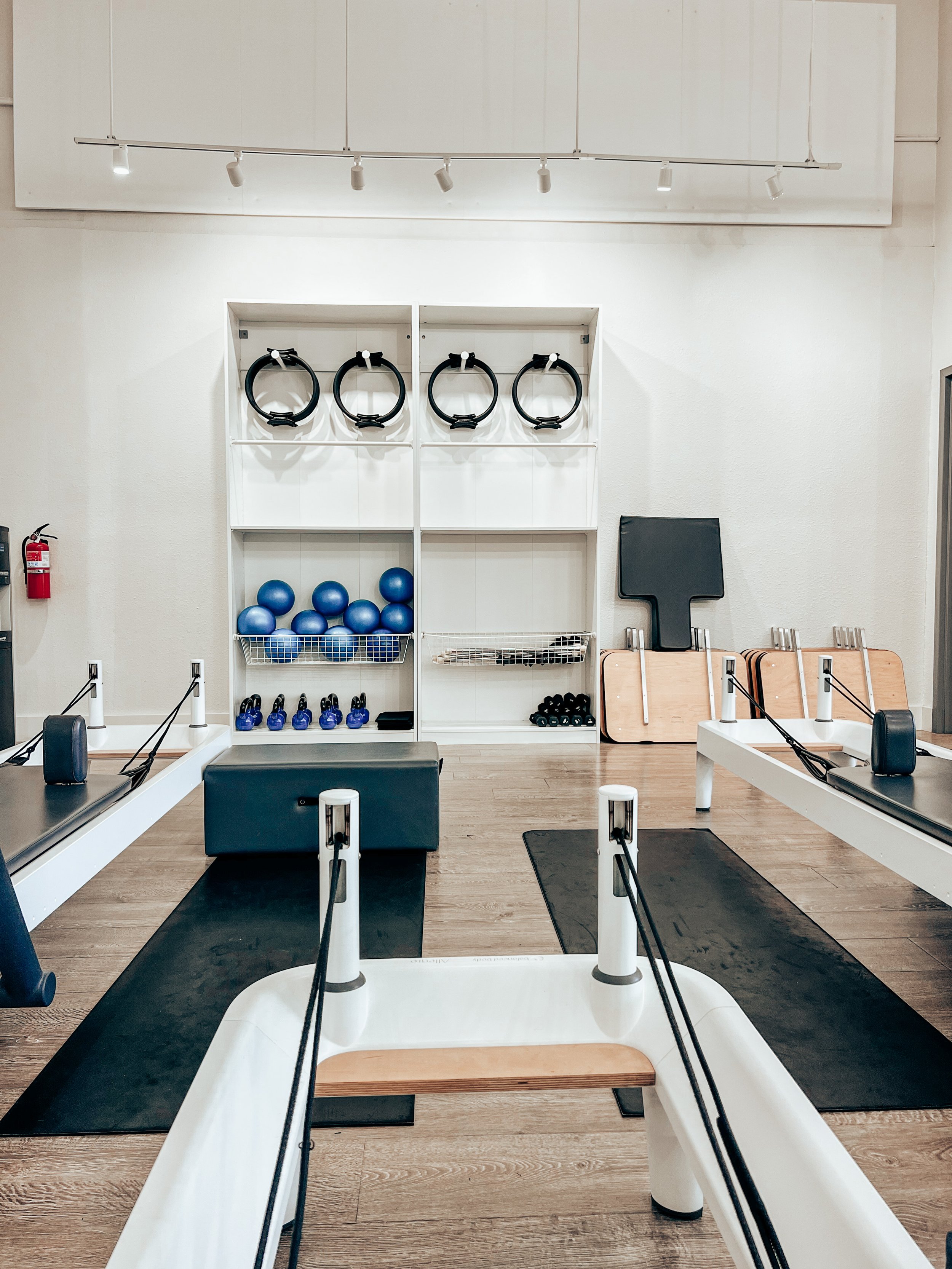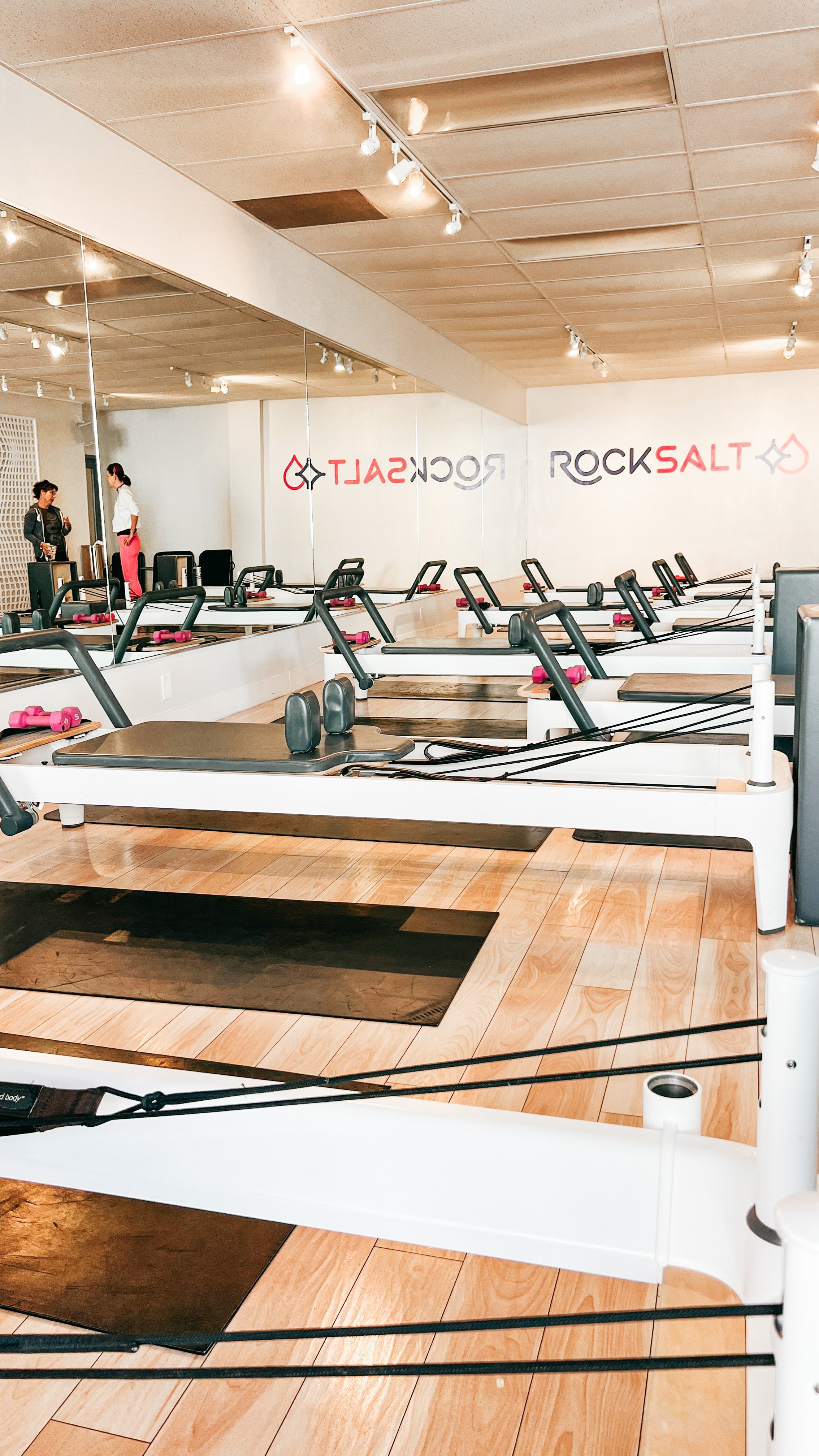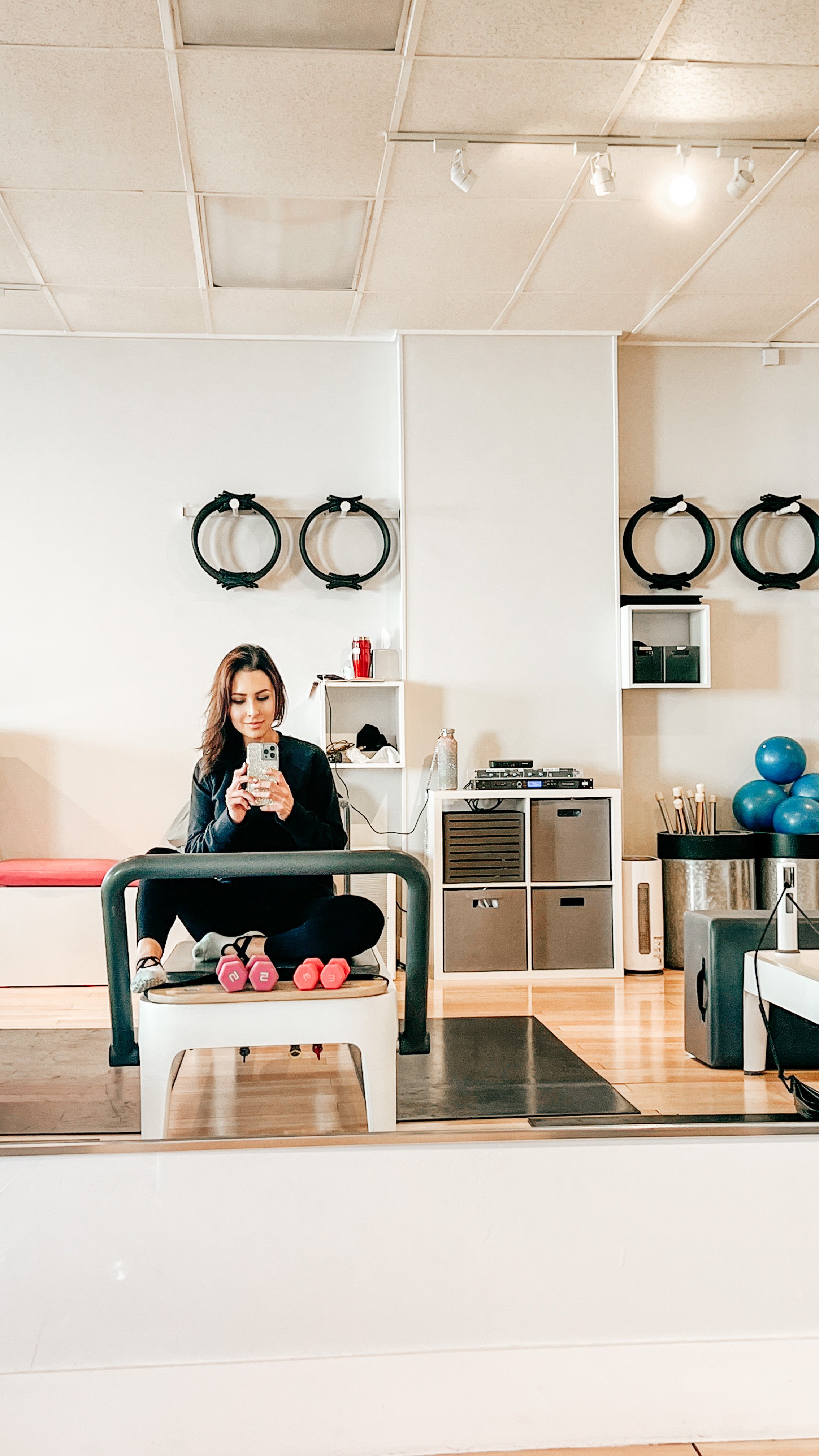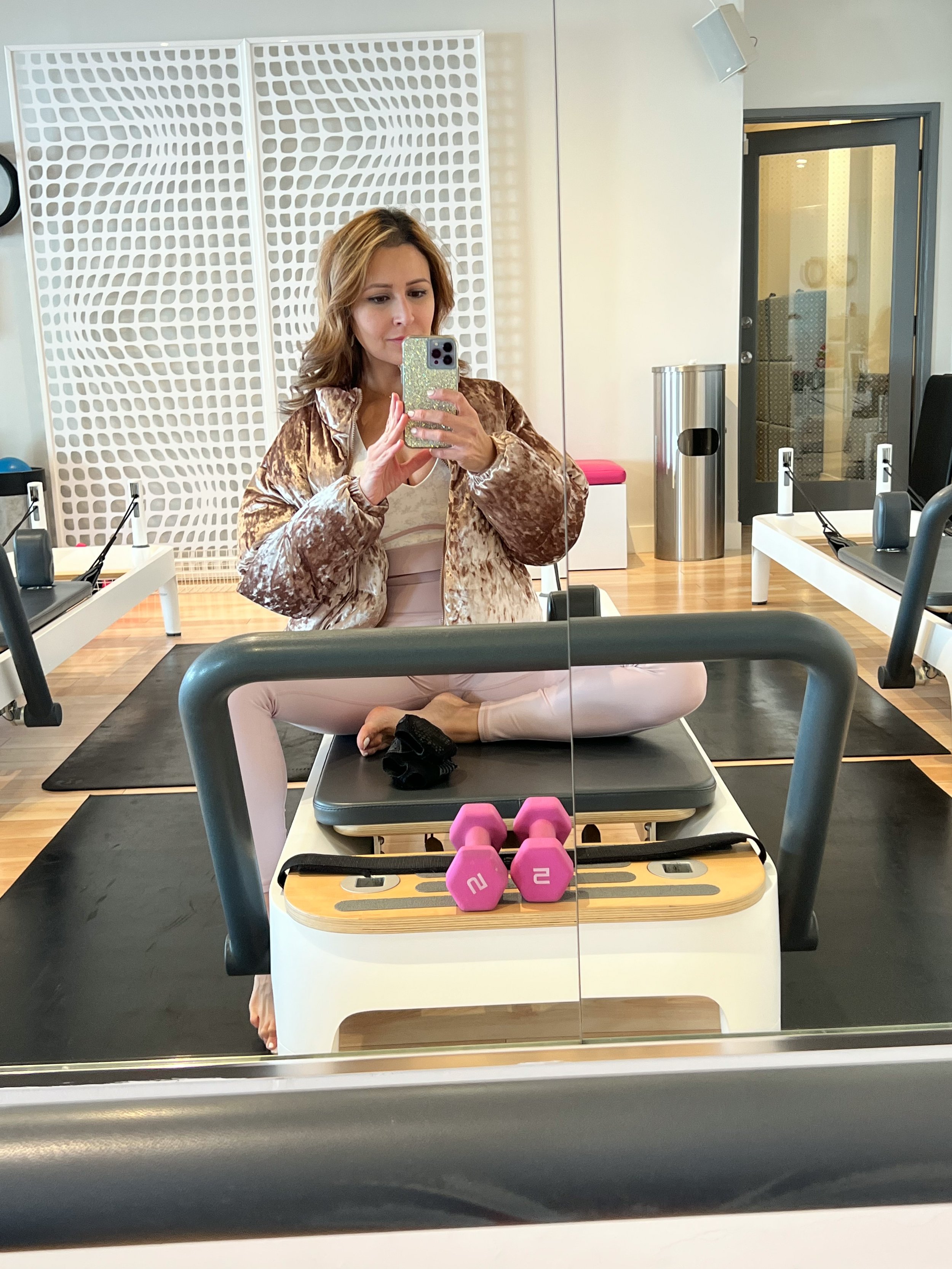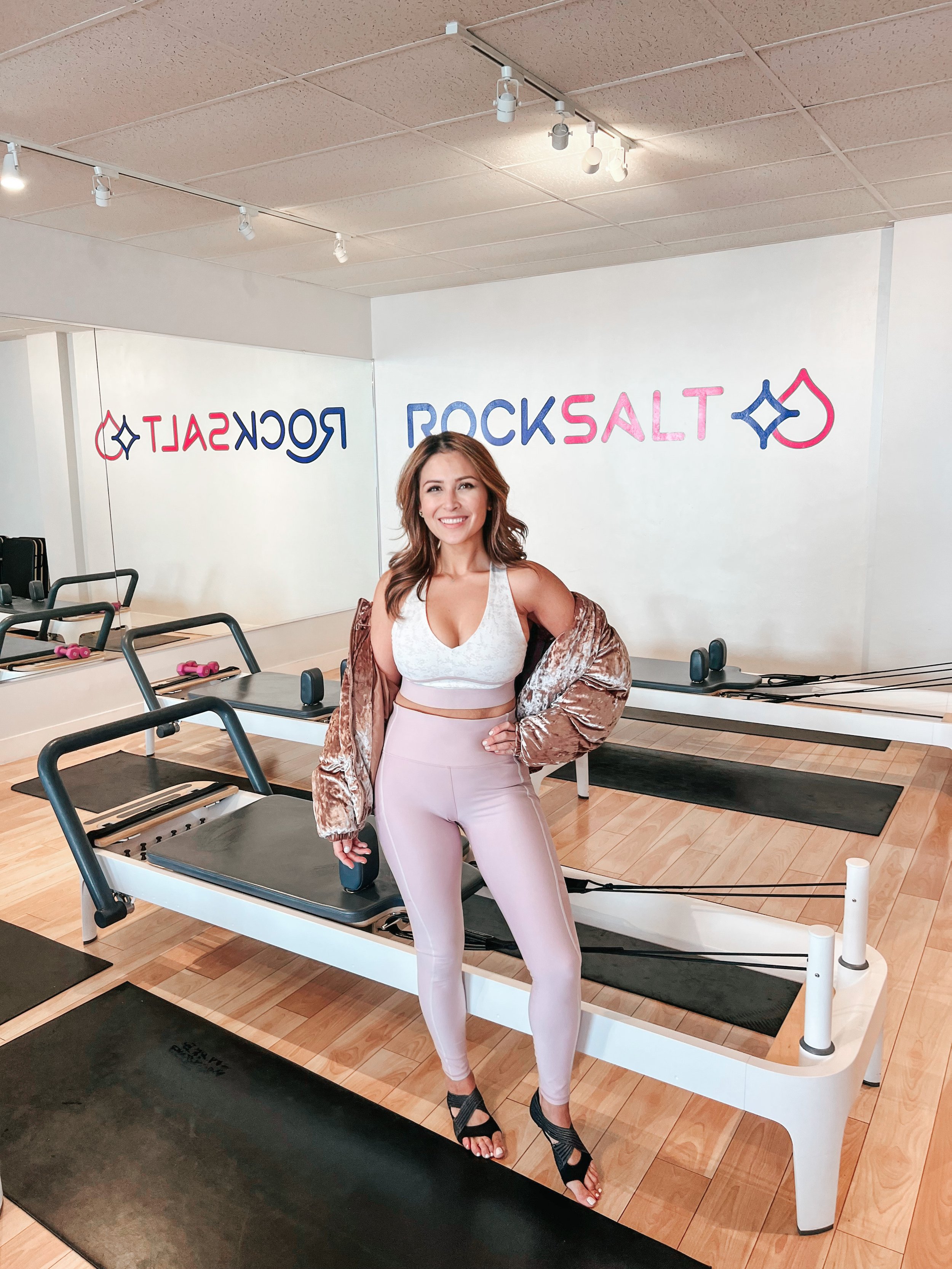Everything You Want to Know About Pilates
Pilates is what you need if you're looking to mix up your fitness routine. Whether you choose to attend classes at a gym or studio or prefer to exercise at home with streaming or virtual options, Pilates offers a versatile workout that can be tailored to your individual needs. Mat Pilates and reformer Pilates provide unique benefits, but both can improve your movement and make the workout challenging. Pilates is a great way to improve your fitness gracefully and can be a game changer for anyone, regardless of their fitness background. Let's dive into everything you need to know as a Pilates newbie to make the most of your first class.
Table of Contents
It might just become your new favorite workout
Reformer Pilates is a form of Pilates that utilizes a specialized machine called a reformer. The machine consists of a sliding carriage, adjustable resistance springs, and straps, which allow for a wide variety of exercises that target the entire body.
I first discovered reformer Pilates a few months ago, and it quickly became my favorite workout. The combination of resistance and control required to perform each movement properly helps to build strength, flexibility, and balance.
One of the biggest benefits of reformer Pilates is its ability to target the entire body. The machine allows for exercises that target the core, arms, legs, and even the glutes. The springs' resistance also helps build muscle tone and definition, making it a great workout for those looking to tone up or lose weight.
Another benefit of reformer Pilates is its low-impact nature. Because the movements are done on a machine, there is less stress on the joints, making it a great workout for people of all ages and fitness levels.
One of the most notable benefits of reformer Pilates is its ability to improve posture. The exercises focus on the core and back muscles, which helps to improve alignment and reduce pain in the back and neck.
Reformer Pilates is also an excellent workout for those looking to improve their balance and coordination. The machine requires a great deal of control, which helps to improve balance and coordination.
Overall, I highly recommend reformer Pilates to anyone looking for a full-body workout that is both challenging and low-impact. It has quickly become my favorite workout, and I look forward to each and every session. The benefits of improved strength, flexibility, balance, posture, and more make it a well-rounded workout for anyone.
So, how does reformer pilates differs from mat pilates?
Reformer Pilates and mat Pilates are both forms of Pilates, but they differ in the equipment used and the exercises performed.
Reformer Pilates is performed on a specialized machine called a reformer. It consists of a sliding carriage, adjustable resistance springs, and straps, allowing for a wide variety of exercises. The springs help build muscle tone and definition, and the machine also allows for exercises that target the core, arms, legs, and glutes.
Mat Pilates, on the other hand, is performed on a mat and typically focuses on exercises that target the core and back muscles. These exercises are done using the body's resistance and are done in a flowing manner, which helps to improve balance and coordination. Mat Pilates typically does not use equipment other than a mat, making it more portable and easy to do at home.
Both forms of Pilates offer many benefits, including:
Improved strength and flexibility: Both Reformer and Mat Pilates focus on controlled, precise movements that help to build strength and flexibility in the muscles.
Improved posture: Both forms of Pilates focus on the core and back muscles, which helps to improve alignment and reduce pain in the back and neck.
Low-impact: Both forms of Pilates are low-impact, making it a great workout for people of all ages and fitness levels.
Balance and coordination: Both Pilates forms help improve balance and coordination, as they require a great deal of control and focus.
Both Reformer Pilates and Mat Pilates are excellent workouts that offer many benefits. Reformer Pilates is a more intense workout that targets the entire body and uses resistance to help build muscle tone, while Mat Pilates focuses more on core and back muscles and is more portable and easy to do at home. Ultimately, the choice between the two will depend on personal preferences and goals.
Pilates reformer workout can support a healthy lifestyle
The Pilates reformer workout can be a great addition to a healthy lifestyle. Here are a few ways in which it can help:
Improves strength and flexibility: The controlled and precise movements in the Pilates reformer workout help to build strength and flexibility in the muscles. This can help to improve overall fitness, reduce the risk of injury, and increase mobility.
Improves posture: The Pilates reformer workout focuses on the core and back muscles, which helps to improve alignment and reduce pain in the back and neck. This can help to reduce the risk of injury, improve breathing, and increase energy levels.
Low-impact: Pilates reformer workout is low-impact, making it a great workout for people of all ages and fitness levels. This can be especially beneficial for those who are recovering from an injury or who have joint pain.
Improves balance and coordination: The Pilates reformer workout requires a great deal of control and focus, which helps to improve balance and coordination. This can help to reduce the risk of falls and improve overall stability.
Reduces stress: Pilates is known to help reduce stress and improve mental well-being. The controlled and precise movements, combined with the focus on breathing and relaxation, can reduce tension and promote a feeling of calm.
Can be adaptable to different fitness levels: The Pilates reformer machine allows for a different level of resistance, making it versatile for different fitness levels and goals. This means that it can be tailored to your fitness level and progress as you become stronger and more flexible.
Can be combined with other forms of exercise: Pilates reformer workout can be combined with other forms of exercise, such as cardio and strength training, to create a well-rounded fitness routine.
Pilates reformer workouts can be a great addition to a healthy lifestyle by improving strength and flexibility, posture, balance, and coordination, reducing stress, and being adaptable to different fitness levels. It can also be combined with other forms of exercise to create a well-rounded routine.
You can get a good Pilates introduction at home, virtually.
A good introduction to Pilates at home is now possible with the variety of at-home Pilates apps available. These apps provide a convenient and accessible way for individuals to learn Pilates and practice at their own pace and schedule. Some popular at-home Pilates apps include:
The Pilates Class: This is one of my favorite apps! It offers a variety of Pilates classes, focusing on mat Pilates and reformer. It also includes a section on Pilates principles and anatomy. The app allows users to customize their workout by choosing the class length, difficulty level, and class type. Users can also track their progress and goals.
FORM Pilates: This app offers a variety of Pilates classes taught by fitness influencer and instructor Sami Clarke. FORM focuses on overall wellness, and the workouts focus on strength when it comes to pilates.
Peloton: This app offers a variety of Pilates classes, from mat to reformer, along with other types of workouts like cycling and running. It also includes live classes and personalized programs.
ClassPass: This app offers a variety of Pilates classes, from mat to reformer, along with other workouts like yoga, strength training, and cardio. It also includes live classes and personalized programs.
Obe: This app offers a variety of Pilates classes, from mat to reformer, along with other workouts like yoga, strength training, and cardio. It also includes live classes and personalized programs.
All of these apps have a similar focus on providing a variety of Pilates classes, but they differ in the types of classes they offer and their approach to Pilates. The Pilates Class and FORM Pilates strongly focus on mat Pilates, while Peloton, ClassPass, and Obe offer more diverse workouts and classes. Peloton, ClassPass, and Obe also include live classes and personalized programs, which can be a great way to get a more personalized Pilates experience.
At-home Pilates apps such as The Pilates Class, FORM Pilates, Peloton, ClassPass, and Obe can provide a convenient and accessible way for individuals to learn Pilates and practice at their own pace and schedule. They differ in the types of classes they offer and the approach to Pilates. Before choosing an app, it's important to consider your goals and preferences to find the best one that suits you.
Here’s some Pilates lingo involved that you should know of before class
Like many other forms of exercise, Pilates has its terminology. Understanding the language of Pilates can greatly enhance your workout experience. A skilled instructor will use cues to bring your body and movements to life. Hearing the words, visualizing the exercise, and performing it can be transformative.
One key term in Pilates is "powerhouse," which refers to the body's core muscles, including the abdominal, back, and hip muscles. This is the foundation of the Pilates method and is emphasized in most exercises. Another term you may hear is "peel through your spine," which refers to slow movement from vertebra to vertebra.
Instructors may also use specific instructional phrases such as "cradle your head in your hands" to support the cervical spine in the arms, "tuck your chin towards your chest" to engage the deep abdominal muscles, and "slide your shoulder blades down" to lengthen the back and open up the shoulders. With time and practice, you will become more familiar with these phrases and how they apply to the movements in Pilates.
What to wear to Pilates
When attending your first Pilates reformer class, it's important to wear comfortable, form-fitting clothing that allows for a full range of movement. Avoid loose-fitting clothing that may get in the way or restrict your movements.
Here are some recommendations for what to wear to your first Pilates reformer class:
7/8 High-Waist Airlift Legging

Leggings like these 7/8 High-Waist Airlift Legging from ALO or form-fitting pants allow you to move comfortably and easily and let your instructor see your leg movements. Avoid baggy or loose pants that can get in the way of the machine or restrict your movements.
A fitted top

A fitted top like this ALO Yoga Airbrush Real Bra Tank Top or a fitted tank top will help keep you covered during movements that involve lying down and allow your instructor to see your posture.
Non-slip socks
Pilates is usually barefoot, but if you prefer to wear socks, ensure they grip the sole to prevent slipping. I use the Nike Studio Wraps, but these have been discontinued. However, KIPETTO makes a great alternative. These, unlike grip socks, really stay on and never slip off. It’s also important to note that each studio has its protocol.
It's also important to come hydrated and to bring a mat, towel, and water bottle if the studio doesn't provide them.
Final Thoughts
Pilates is a versatile and effective exercise that can benefit people of all ages and fitness levels. Whether you attend classes at a gym or studio or prefer to exercise at home with streaming or virtual options, Pilates offers a workout that can be tailored to your individual needs. Mat Pilates and reformer Pilates offer unique benefits, but both can improve your movement and make the workout challenging. Pilates is a great way to improve your fitness gracefully and can be a game changer for anyone, regardless of their fitness background. Familiarize yourself with the Pilates lingo and concepts, wear comfortable clothing and non-slip socks, and you are ready to experience the benefits of Pilates for yourself. Remember, it may take time to get used to, but understanding the language of Pilates can greatly enhance your workout experience.

